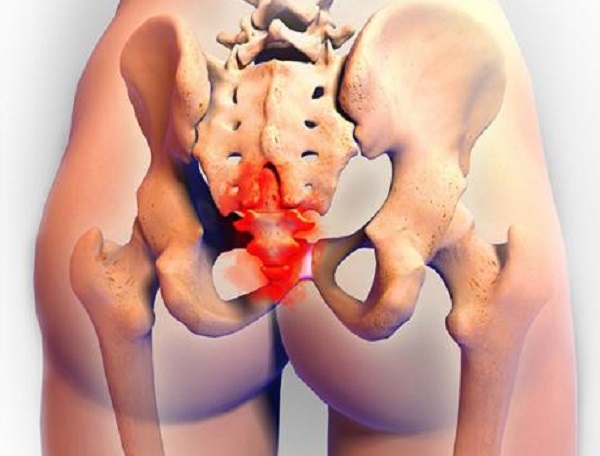Inflammation is the body’s natural and essential reaction to injury, infection or disease that causes tissue redness, swelling, and the unpleasant sensations of heat and pain. While uncomfortable, inflammation is a crucial first step of the healing process, so it is very beneficial when in control relative to a short term injury or illness. The problem is that many of us are stuck in a prolonged inflammatory state and this protective function spins out of control, like a fire raging in the body. New research is consistently linking countless chronic diseases, conditions, degeneration, and even depression with chronic, low level, systemic inflammation. One of the most fundamental ways we can reduce this excessive inflammation back down to a healthy level is by changing the way we choose to eat.
The Modern Diet Induces Inflammation
Processed, inflammatory and nutritionally-void foods have become the staple of the standard North American diet. Some of the most common offenders are sugar and processed grains such as bread, pasta, crackers and baked goods. Certain oils, including the oils that have been heavily marketed as being “good” for us, such as highly processed oils high in omega 6, such as corn, canola, safflower and cottonseed seed oils are potent inflammatory triggers when consumed in excess. The delicate balance of omega 6 to omega 3 is exceedingly important in regulating inflammation. Of course trans fats like margarine and shortening are the unhealthiest fats of all and should be strictly avoided. If a food doesn’t grow in nature, chances are it is fueling inflammation and could potentially be making symptoms worse.
Conversely, fresh, whole, unprocessed foods tend to calm inflammation down. Abundant fresh produce like fresh dark leafy greens, berries, pomegranates, broccoli, and avocados are fabulous anti-inflammatory foods. Flavorful spices like ginger, garlic, turmeric, and good fats rich in omega 3, like wild salmon, raw nuts and seeds such as walnuts, chia, hemp and pumpkin seeds are also often helpful. The essential fatty acid EPA, which is a metabolite of omega 3, is particularly adept at reducing inflammation. EPA is found in foods like wild cold water oily fish like salmon, herring, or sardines and some types of microalgae.
Endometriosis and Inflammation
How does this relate to endometriosis? Endometriosis lesions are like little inflammation factories, pumping out inflammatory cytokines like tumor necrosis factor and interleukins that can cause debilitating pain and scar tissue. The foods we eat contain the building blocks with the potential to fuel both inflammatory and anti-inflammatory states. The everyday food choices we make can help shift the balance to calm down the metaphorical fire, whereas eating the wrong foods will tip the scale against us and throw gas onto the flames. Why would we choose to keep eating foods that just make us feel sick, miserable and make an already bad situation even worse?
Where To Begin
The first step in transitioning to an anti-inflammatory diet is to find a nutritionist or naturopathic doctor who is experienced in women’s health and pelvic pain to design a balanced nutrition program that works for you as an individual. There is so much more to dietary therapy than simply avoiding a generic list of foods. In addition, more often than not there are “forbidden” foods that are well tolerated and “allowable” foods that trigger pain and other symptoms, so it must be personalized rather than a one size fits all approach. An experienced professional will create your specific, individual plan and guide you through the process while ensuring you get all of the essential nutrition you need.
Of course everyone is different, but there are three main components that I typically start with when working with a pelvic pain client. One: eliminate inflammatory foods. Two: eliminate food sensitivities, which are very common among endometriosis patients and three: eliminate endocrine disruptors. From there we determine what each person can tolerate and we further fine tune to address additional factors like interstitial cystitis, painful bladder syndrome, and pain syndromes which also can improve symptomatically with dietary therapy.
How Long Does It Take?
How long does it take to start feeling better? It depends on the person. Some people can start feeling better within a week or so while for others it can take longer. Personally, I started noticing results in my own endometriosis pain within a month of making targeted dietary changes. If all of one’s dietary pain triggers have been eliminated, one should be feeling a difference within three to six months.
We all have to eat, so it only makes sense to start eating in a way that is going to help us feel our best.
We Need Your Help
More people than ever are reading Hormones Matter, a testament to the need for independent voices in health and medicine. We are not funded and accept limited advertising. Unlike many health sites, we don’t force you to purchase a subscription. We believe health information should be open to all. If you read Hormones Matter, like it, please help support it. Contribute now.
Yes, I would like to support Hormones Matter.
Image credit: Pixabay.
This post was published originally on Hormones Matter on January 6, 2015.
















True! Ive started juicing not knowing It would relieve my pain from endometriosis. Then when my period came its amazing i’m not feeling any pain, no more discomforts. I’ve searched for the benefits of juicing and it is the reason. Now I continue juicing and no more pain. May this work for you and to others to!